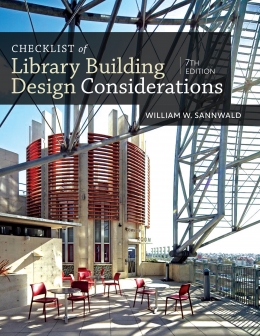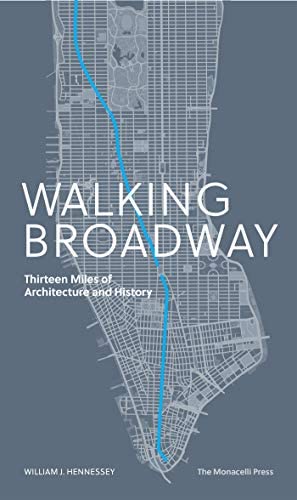Paul Glassman
37 Articles
Last 30 days
Last 6 months
Last 12 months
Last 24 months
Specific Dates
From:
To:
PREMIUM
Checklist of Library Building Design Considerations
While this edition remains a useful resource, libraries with the sixth edition may opt not to replace it and might consider acquiring Fred Schlipf, Joe Huberty, and John A. Moorman’s encyclopedic Practical Handbook of Library Architecture as a companion.
PREMIUM
Eye-Popping, Show-Stopping Libraries: Trends and Insights from the AIA/ALA Library Building Awards
For all collections supporting architectural design and library administration.
PREMIUM
Fifth Avenue: From Washington Square to Marcus Garvey Park
The precise, descriptive, and objective prose contrasts with the AIA Guide to New York City’s frequently arch comments. For all readers interested in New York’s built environment.
PREMIUM
Spatial Orders, Social Forms: Art and the City in Modern Brazil
Architectural history scholars and advanced students of Latin America will benefit from this work, but the exhibition catalogues Condemned To Be Modern and Access for All: São Paulo’s Architectural Infrastructures will serve most readers better.
PREMIUM
Walking Broadway: Thirteen Miles of Architecture and History
For all architectural history students and urban designers, who might read Hilary Ballon’s complementary The Greatest Grid: The Master Plan of Manhattan, 1911–2011 alongside the guidebook.
PREMIUM
Houses That Can Save the World
Some selections come from conceptual artists and fall well outside of realistic design applications, and this effort would have greater impact if limited to pragmatic solutions. Still, the original concept makes this a sound choice for most design collections.
PREMIUM
The Intimate City: Walking New York
With interviews often meandering into the overly personal and with incidental-seeming uncaptioned photographs (their compelling views and dramatic cropping notwithstanding), this book would be more rewarding as a series of video tours.
PREMIUM
Master of the Midcentury: The Architecture of William F. Cody
There are too few floor plans, which reduces the value of this volume; suitable for comprehensive architecture collections.
PREMIUM
Breuer’s Bohemia: The Architect, His Circle, and Midcentury Houses in New England
While in its focus on two Breuer clients, this book pairs well with Leonard Eaton’s Two Chicago Architects and Their Clients, Crump’s film tells a more compelling story of self-indulgent libertines who nonetheless became patrons of important work. Joachim Driller’s Breuer Houses (more comprehensively illustrated with floor plans) offers a deeper architectural understanding, but used in tandem with Syracuse University’s Digital Archive, Crump’s book is a worthy addition to larger architecture collections.
ALREADY A SUBSCRIBER? LOG IN
We are currently offering this content for free. Sign up now to activate your personal profile, where you can save articles for future viewing










